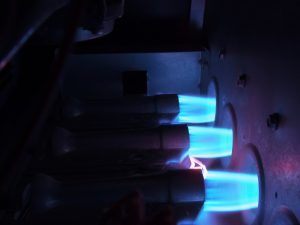Having a broken air conditioning unit in the summer is really frustrating. Without it, your home feels hot and your energy bills go up.
Figuring out what’s wrong is the first step to fixing your AC. But, where do you begin? Knowing the common problems can help you find the issue and avoid expensive fixes.
Key Takeaways
- Common signs that your AC unit needs diagnosis
- Simple troubleshooting steps to identify AC issues
- Potential causes of AC malfunction
- Tips for maintaining your AC unit
- When to call a professional for AC repair
Common AC Symptoms and What They Indicate
It’s important to know the signs of a bad AC, like low airflow or high energy bills. These signs show that something might be wrong with your air conditioner. It’s key to spot these issues early.
AC problems can show up in many ways. For example, if your vents don’t blow much air, it could mean the fan is broken or the ducts are blocked. Ice on the refrigerant lines or a frozen coil might mean there’s a problem with the cooling fluid or air flow.
Water leaking from your AC could mean the drain is clogged or the pump isn’t working right. If your AC isn’t cooling well, it might be because of a leak, dirty filters, or a broken compressor. And if your energy bills are too high, it could mean your AC is working too hard.
- Low airflow: Possible fan or ductwork blockages.
- Ice on refrigerant lines or frozen evaporator coil: Possible refrigerant leaks or airflow obstructions.
- Water leaks: Clogged condensate drain or malfunctioning condensate pump.
Knowing these common signs can help you figure out what’s wrong with your AC. It lets you fix the problem yourself or call a pro if needed.
How Do I Diagnose What’s Wrong with My AC? A Step-by-Step Approach
Figuring out what’s wrong with your air conditioner can be easy if you know the right steps. Start by checking each part of your AC unit to find the problem.
Checking the Thermostat Settings
The first thing to do is check the thermostat settings. Make sure it’s set to “cool” and not “heat.” Also, check that the temperature is lower than the room’s current temperature. Sometimes, just changing the thermostat can fix the issue.
Next, look at the air filter for dirt and debris. A dirty air filter can lead to poor airflow and higher energy bills. If it’s dirty, swap it out for a new one and see if it helps.
Other important steps in troubleshooting your AC include:
- Check the circuit breaker or fuse box to see if a breaker has tripped or a fuse has blown.
- Look at the condenser coils for dirt and clean them if needed.
- Make sure the AC unit is the right size for your home.
By following these steps, you can find and possibly fix common AC problems. For more complex issues, you might need to call an HVAC expert with the right tools.
Regular AC maintenance is also key to avoid problems and keep your AC running well. This means getting annual maintenance checks and fixing any issues right away.
Common AC Problems and Their Solutions
Air conditioners can face several common problems. These can often be fixed with simple steps. Knowing these issues and how to solve them helps homeowners keep their AC units working well.
One common issue is with the AC compressor. Problems here can make the AC cool less. To fix compressor issues, look for wear or damage. Also, make sure the compressor fits the unit right.
Here are some common AC problems and their solutions:
- Refrigerant Leaks: Look for leaks around the AC unit and pipes. If you find a leak, get a pro to fix it.
- Dirty Condenser Coils: Check the condenser coils for dirt. Cleaning them can make the AC work better.
- Clogged Air Filter: A dirty air filter can block airflow. Clean or replace it regularly to fix this.
Also, adjusting the thermostat can help with AC problems. Make sure the thermostat is set right and working well. This is key for the AC’s performance.
By tackling these common issues, homeowners might not need a pro. Regular upkeep, like cleaning coils and checking filters, can also stop problems before they start.
Conclusion
Fixing AC problems can be tough, but there are steps to follow. Homeowners can find and possibly solve common issues. Knowing how to troubleshoot and what problems to watch out for is key.
Good troubleshooting starts with a plan. Check the thermostat and look at the condenser coils. These steps can help save money and keep your AC running well.
Now, homeowners know how to handle common AC issues. Regular checks and quick fixes can stop small problems from getting big. This keeps your home cool and comfortable.
Whether you require installation, repair, or maintenance, our technicians will assist you with top-quality service at any time of the day or night. Take comfort in knowing your indoor air quality is the best it can be with MOE heating & cooling services Ontario's solution for heating, air conditioning, and ventilation that’s cooler than the rest.
Contact us to schedule a visit. Our qualified team of technicians, are always ready to help you and guide you for heating and cooling issues. Weather you want to replace an old furnace or install a brand new air conditioner, we are here to help you. Our main office is at Kitchener but we can service most of Ontario's cities
Source link


